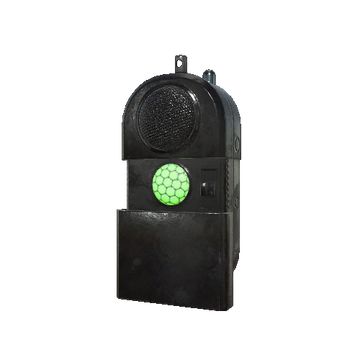Decoding the Causes of Etching on Glassware in Dishwashers
Introduction
Etching on glassware results from several factors, and it's a common issue faced by countless dishwasher owners. In this comprehensive guide, we will decrypt every cause behind this problem – from the overuse of dishwasher detergent, hard water, to incorrect loading. Insightfully, we will also provide preventative strategies so you can enjoy spot-free glassware for a long time.
What Is Etching and Its Impact on Glassware?
Etching, a familiar household enigma, is a type of damage that manifests itself on glassware as cloudy, rough, or corroded patches. This persistent problem is often mistaken for stubborn water spots or stains. However, unlike water marks that can be wiped clean, etching is a far more enduring form of damage, dishearteningly leaving a lasting impact. Here's a look at what etching involves:
- Definition: Etching is the process that results in permanent rough, cloudy, or corroded areas appearing on your otherwise transparent and smooth glassware. This is not a surface blemish but an alteration in the texture of glass itself.
- Distinguishing Factor: Unlike water spots or streaks that may appear after a dishwasher cycle, etching doesn't vanish after a thorough cleaning or wiping. It’s a sign of permanent damage to the glass surface.

- Impact: Etching doesn't merely affect aesthetics but can be a precursor to more serious issues. It can lead to a weakening of the glass over time, resulting in cracks or shatters.
- Common Misconception: Etching and scratching are not the same. Etching presents a dull, cloudy, or frosted appearance, while scratches are clear, visible lines that can be felt by touch.
In summary, understanding what etching is and what causes it is your first line of defense in preserving the lifespan and allure of your glassware.
What are the Main Culprits Behind Dishwasher Etching?
Etching on your glassware can catch you off guard. This damage usually stems from two significant elements: the excessive use of dishwashing detergent and hard water.
The Effect of Dishwashing Detergent Overuse on Etching
Using more dishwashing detergent than necessary might seem like a thorough way to rid your glassware of any stubborn stains and grease. But, the reality differs; The detergent's excessive alkalis can start to abrade the glass surface, leading to etching.
• Excessive Alkaline Environment: More detergent equals a more alkaline environment. An alkaline surrounding is not glass-friendly and can harshly erode its surface. Thus, it's straightforward – overusing detergent paves a destructive path to your glassware's surface, causing a dull and cloudy appearance that marks the onset of etching.
• Accelerates Wear and Tear: Apart from etching, excessive detergent use accelerates your glassware's wear and tear. With each wash, you might notice the transparency of your glasswork losing its charm, all thanks to corrosive alkalis that speed up deterioration.
Remember, moderation is key when using dishwashing detergent. Ensure to use an optimal quantity to clean your glassware, not destroy it.
Understanding Hard Water’s Role in Glassware Etching
Hard water, loaded with a high mineral content, can cause a chalky deposit on your glassware. This accumulated mineral layer paves the way for permanent etching on your glass surface over time.
• High Mineral Content: Hard water is mineral-rich, containing elements like calcium and magnesium. While being healthily rich in mineral composition, it's not the best option for your dishwasher. The residual minerals from hard water can leave behind a chalky layer on your glassware, which can lead to long-term etching.
• Subtle but Prolonged Damage: The role of hard water in glassware etching is often underestimated. While the damage progression is slow, the resulting etching is permanent. Once your glassware gets etched, it's irreversible.
Hence, consider using a water softener or add a rinse aid to the dishwasher to reduce the effects of hard water on your glassware.
How to Distinguish Between Etching and Scratching?
Knowing how to differentiate between etching and scratching on your glassware can give you valuable insight into your dishwasher's operation and the factors causing damage. These two types of damages are not the same and are caused by different reasons.
• Appearance: The first noticeable difference lies in their visual manifestation. Etching presents a dull, frosty, or cloudy appearance on your glassware, which may be mistaken for water spots or film build-up. On the other hand, scratches are clear and can easily be spotted as they create visible lines on the glass surface.
• Physical Texture: The sensation when you run your fingers across the affected surface also varies. You can feel scratches due to their grooved nature, typically caused by friction or contact with hard objects. Conversely, etching alters the smooth finish of your glassware, making it feel rough to touch.
• Cause: Scratches are usually the result of physical factors such as mishandling or improper loading leading to rubbing or contact with other objects. Etching, on the other hand, is an outcome of chemical factors like an overly alkaline dishwasher detergent or the presence of hard water.
Understanding these distinctions can help you implement the appropriate preventative strategies and maintain the pristine condition of your glassware for the long haul.
Can Temperature Affect the Etching Process in Dishwashers?
Yes, temperature significantly impacts the etching process in dishwashers. Here's a closer look at how:
- Accelerates chemical reactions: Higher temperatures increase the reaction rate between the dishwasher detergent and the glassware. This can intensify the etching, making it appear more pronounced.
- Escalates issues with hard water: High heat can magnify the effects of hard water on your glassware. It causes the minerals in hard water to deposit quickly on the glassware, speeding up the etching process.
- Dishwasher settings: Dishwashers with improper temperature settings particularly those set at high, are more likely to cause etching.
In response, users should:
- Balance the temperature: When washing glassware, use appropriate temperature settings to reduce the risk of etching.
- Manage hard water: Softening your water supply can help mitigate the compounded effect of heat on the hard water-induced etching.
Thus, temperature control is a crucial aspect in preventing dishwasher etching.
How Does Incorrect Dishwasher Loading Cause Etching?
When placing your wares in the dishwasher, it's vital to do so meticulously. Ironically, a minor oversight here could take a toll on your valuable glassware. Items that are not properly arranged rub against each other during the washing cycle. This friction can result in scratches or even chip away at the glass layers, rendering them susceptible to the process of etching.
To avoid these issues, remember the key tips:
- Ensure there is sufficient space between each item. They should not touch each other.
- Place glasses securely on the prongs and not over them.
- Put thin, delicate glassware in the top rack where water pressure is more gentle.
- Place dishwasher-safe heavy items on the bottom rack.
- Be careful about long utensils. They should not poke into glassware.
Adopting these instructions will help mitigate the risk of damaging and causing the etching of your glassware.

What are Some Effective Strategies to Combat Etching?
In the fight against etching on glassware, various effective strategies can prove quite helpful. By incorporating these methods, you can ensure the longevity of your glassware, keeping it free from cloudiness and damage.
Use the Right Amount of Detergent:
The key to minimizing etching is using the optimal amount of detergent. More often than not, less is more when it comes to dishwasher detergent. Overuse can lead to an overly alkaline environment that promotes etching.
Install a Water Softener:
If you reside in an area with hard water, consider installing a water softening system. This device processes the water, reducing the mineral content that causes etching.
Load Properly:
Prevent scratches and potential etching by loading your dishwasher correctly. Make sure items aren't touching and avoid overloading the dishwasher as this can increase the likelihood of damage.
Opt for a Lower Temperature:
Lower temperature settings can help slow down the rate at which the dishwasher detergent reacts with the glassware. By doing so, it reduces the severity of etching.
Regular Maintenance:
Regularly clean and service your dishwasher. Regular maintenance can prevent any undissolved detergent or hard water minerals from accumulating and etching your glassware.
Incorporating these strategies can certainly mitigate the likelihood of etching, consequently preserving the appearance and extending the lifespan of your glassware.
Conclusion
Improper loading can cause items to rub against each other during washing. This friction can lead to scratches or chip off the glass layers, leaving the surface vulnerable to the etching process.
Related FAQs about what causes etching on glassware in dishwasher
Why is my dishwasher causing glassware etching despite using premium detergent?
Premium detergents are oftentimes highly alkaline which can lead to etching. Moreover, using too much detergent, regardless of its quality, can contribute to etching. Opting for a moderate amount and ensuring the dishwasher is not overloaded will help mitigate this.
Can permanent etching on glassware be reversed or minimized?
Unfortunately, once etching happens, it's permanent and can't be reversed or minimized. It is an alteration of the glass surface. Preventative measures such as proper temperature control, water softening, and judicious use of detergent are integral to circumvent etching.
How to prevent etching on glassware without compromising the effectiveness of the dishwasher?
Balancing detergent use, employing a water softener (for hard water), arranging glassware properly in the dishwasher, and setting the optimal temperature can prevent etching, without compromising the dishwasher effectiveness. Regular maintenance of the dishwasher also helps.







